Salisbury Spitfire memorial to honour secret workforce
- Published
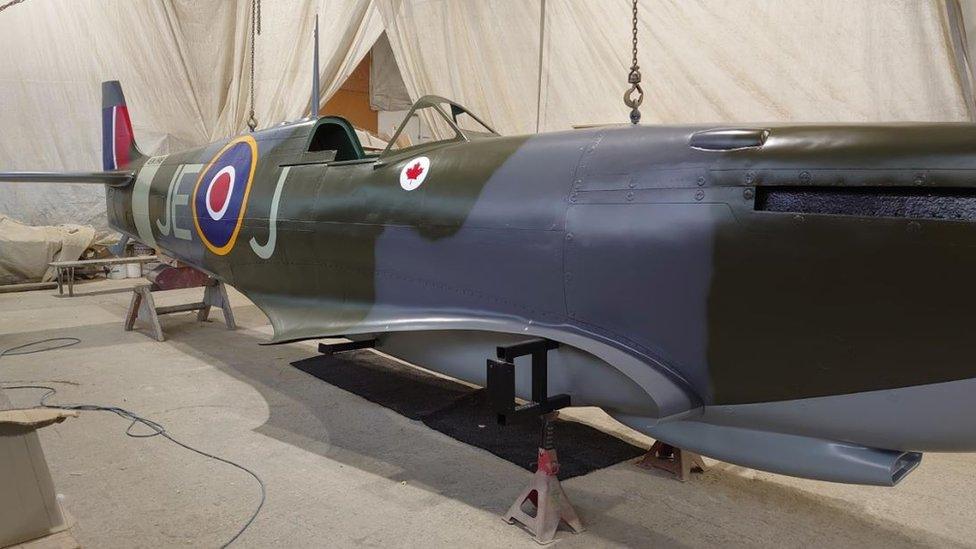
A life-sized replica Spitfire has been made as a memorial to the army of civilians who secretly built the fighter planes during World War Two.
More than 2,000 Spitfires were built in garages and sheds in Salisbury after Southampton's Spitfire production facilities were bombed.
Young women, elderly men and a handful of engineers worked on the top-secret operation.
The replica will now go on permanent display next to a former factory site.
The audacious mission only became wider public knowledge after the release of the 2016 film The Secret Spitfires, external.
Salisbury was the main site but Spitfires were also made in Trowbridge and Reading.
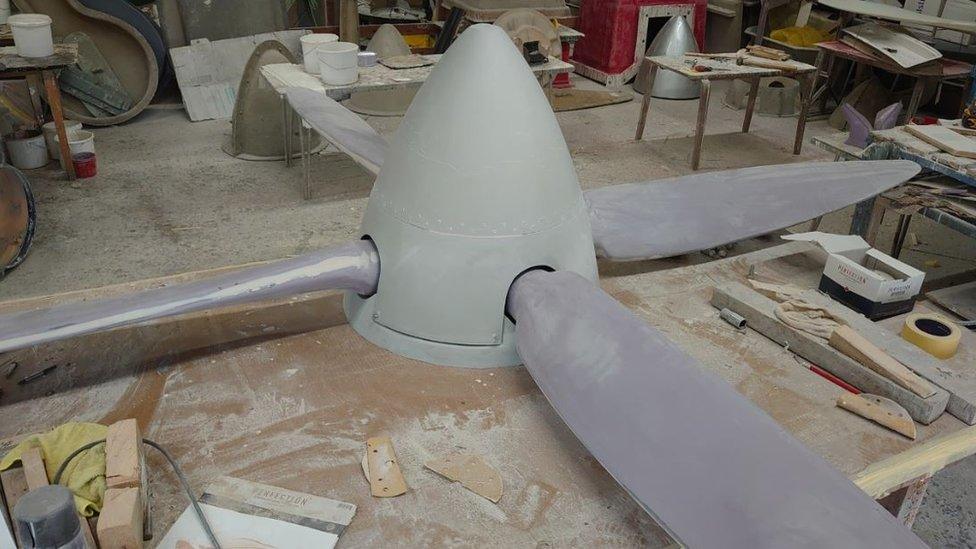
The replica took 18 weeks to construct and paint
Joan Burroughs volunteered to work at Chattis Hill to help the war effort as her brothers were fighting in Europe.
"My brothers were in the Army so you felt you were helping them as well," she said.
Bette Blackwell was a teenage hairdresser in Salisbury when she was told to report for war work.
She became a riveter.
"I don't think anybody knew there was a Spitfire factory there," she said.
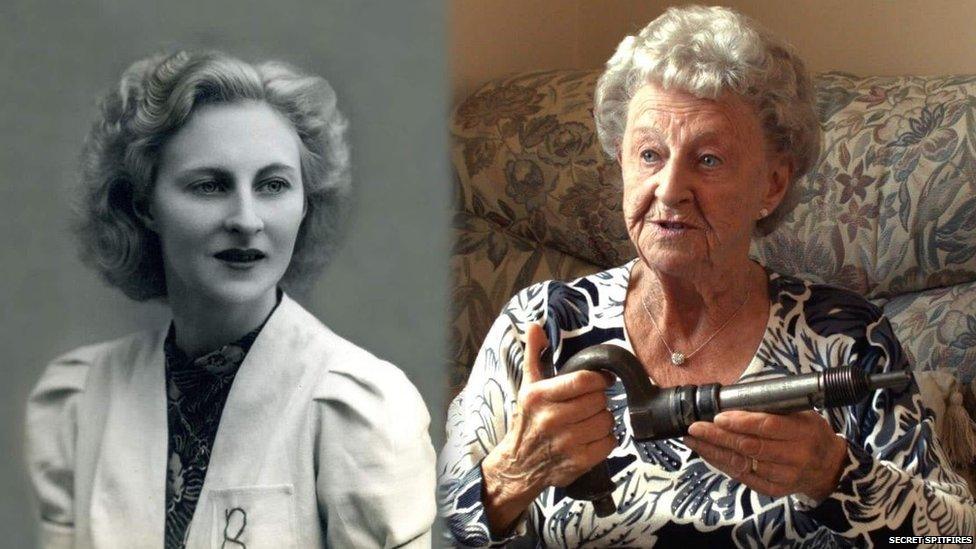
Bette Blackwell remembers her work in a secret Spitfire factory with pride
Chris Whalley, chair of the Trustees of the Secret Spitfires charity said the people who worked to build the famous planes kept their secret well.
"In many cases their own families didn't know, until the film was made," he said.
After meeting some of the people involved Mr Whalley led a campaign to raise £100,000 to pay for a memorial replica.
"Lots of people in Salisbury still don't know about this, but when it's in place we can tell them the story," he said.
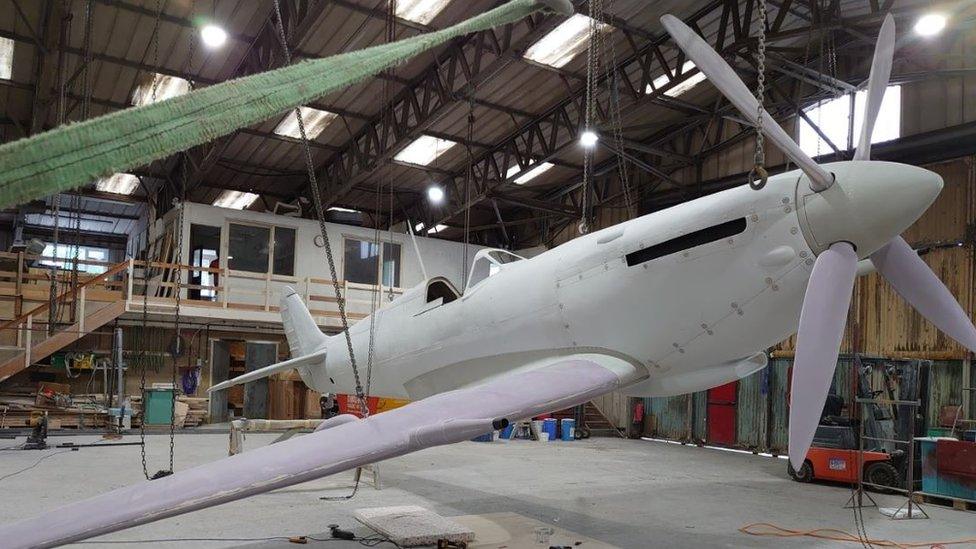
The replica plane will be officially unveiled next year
The fibreglass replica has been built by Stefan Bailey of GB Replicas in Norfolk. It took just over 18 weeks in total, to construct and paint.
It is being transported 230 miles to Wiltshire by road, where it will be temporarily housed at the Boscombe Down Aviation Collection at Old Sarum until it can be officially unveiled in 2021.
The Secret Spitfires charity has been planning a series of blue plaques with the city's Civic Society to be placed on the buildings where planes were built as part of a tourist trail ending at Castle Street, where the replica will eventually be displayed.
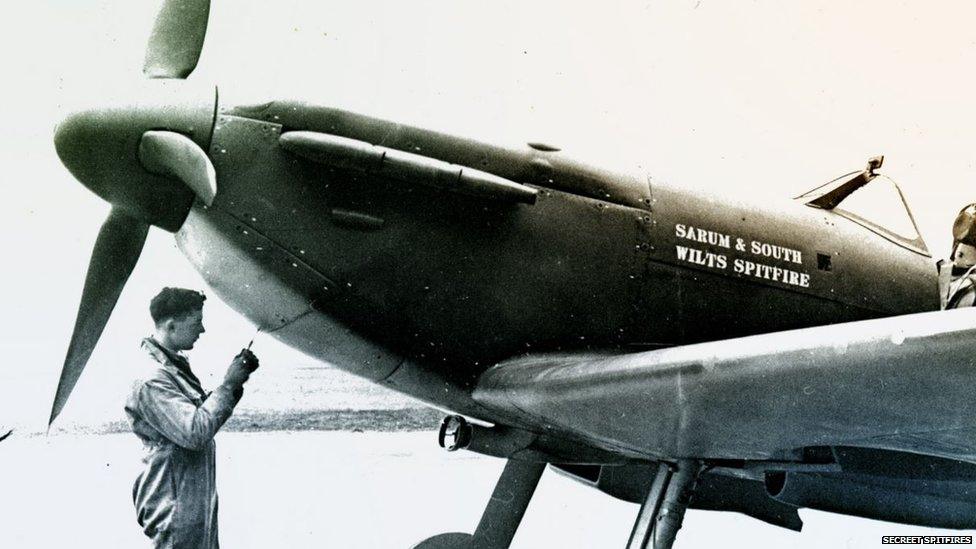
Spitfires were built in sheds, bus depot and garages by unskilled workers after production factories in Southampton were bombed
- Published15 October 2019
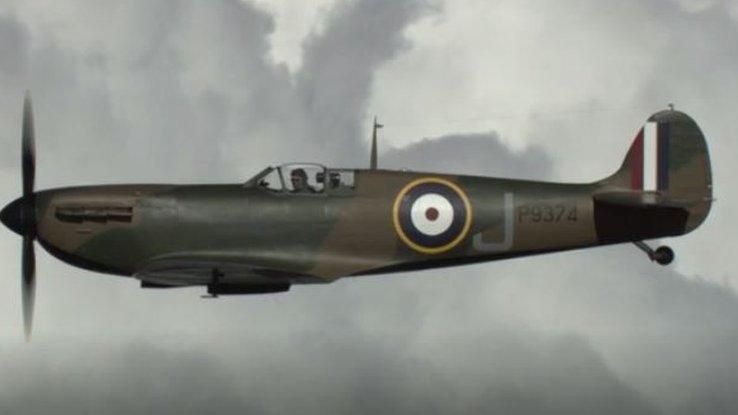
- Published10 July 2018
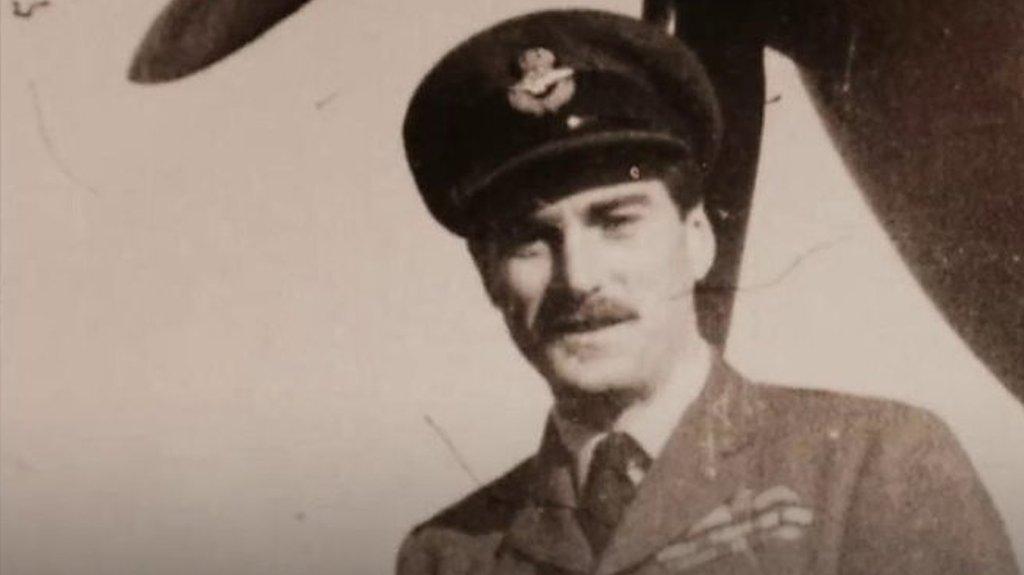
- Published10 July 2020
